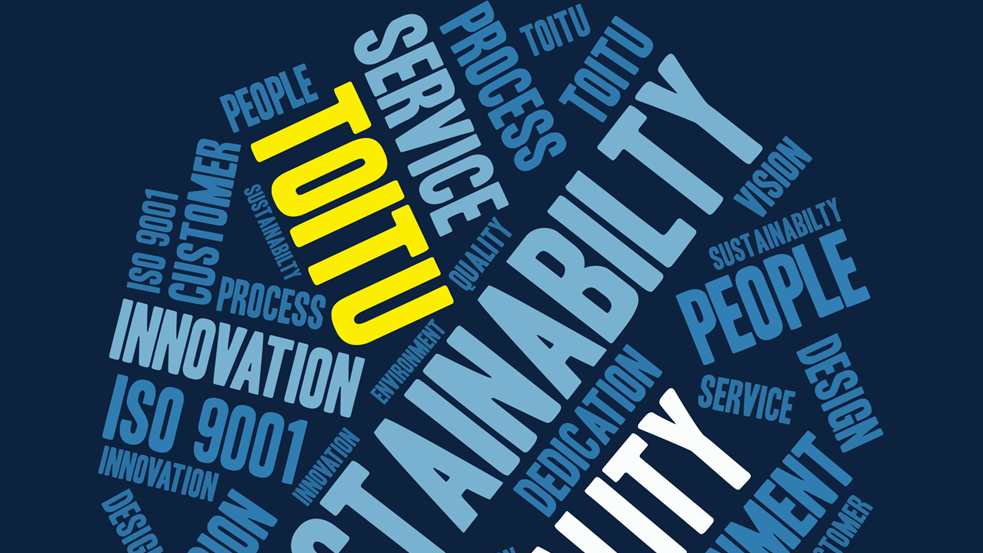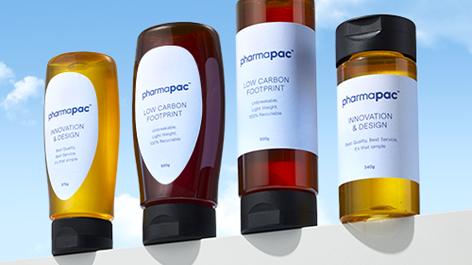Navigating the areas of sustainability and sustainable packaging can feel a bit overwhelming. It can be difficult to distinguish the truth from the greenwashing. Is it all just a bunch of marketing magic to make us think we’re doing the right thing?
Let’s take a closer look at sustainable packaging – what it is and whether it is more beneficial than alternatives.
What do we mean by “sustainability”?
We use this word a lot, but we don’t necessarily all agree on what it means. At Pharmapac, sustainability involves acting in a way that acknowledges that natural resources are limited and must be valued. We look for behaviours and practices, in business and in life in general, that protect our people and planet – for now and for the future.
We’re always looking for ways to plan and prepare for the future – whether that means conserving energy, reducing water use, recycling materials, or reusing products.
How can packaging be sustainable?
Sustainable packaging considers the full cycle of production and use. It involves thinking about the circular economy, described by the World Economic Forum as:
“A circular economy is an industrial system that is restorative or regenerative by intention and design. It replaces the end-of-life concept with restoration, shifts towards the use of renewable energy, eliminates the use of toxic chemicals, which impair reuse and return to the biosphere, and aims for the elimination of waste through the superior design of materials, products, systems and business models”.
For us, packaging can only be considered sustainable if we look at its impact on the environment during production, use and end-of-life. How is it made and what happens to it after it’s used?
Are Pharmapac products sustainable packaging?
Packaging can be called sustainable if it meets three criteria:
- It is produced in a way that helps preserve and sustain our resources
- It has a longer use cycle than single-use packaging
- It can be reused or recycled, meaning there are alternatives to putting it in landfill.
Let’s take a closer look at how all of Pharmapac products meet these three criteria.
Specific actions Pharmapac takes to create sustainable packaging
Pharmapac works hard to produce as little waste as possible in the manufacturing process and we are committed to creating products that can be reused or recycled.
Sustainability factors into our practices and our products in a number of ways:
- All the resins used by Pharmapac are 100% recyclable, recycled, or plant-based – which means that 100% of Pharmapac jars and bottles are recyclable.
- We design packaging that can be recycled via kerbside recycling schemes. It’s important that recycling is made easy for consumers.
- We are staunch advocates of using post consumer recyclates, or PCR – created when recycled resins go back into the reproduction of new plastic packaging, such as rPET, a polymer that is recycled into other products.
- We also use another type of recycled content, called post-industrial. This is where we use our own production recyclate and recycle it back into our products where possible.
- We have strong partnerships with many inspiring recycling businesses like FuturePost who turn recycled plastics into farm / vineyard fence posts, and supply recyclate to circular brands like Method Bins who use PP recyclate in their bins.
- We supply packaging made from renewable materials for recycling, like sugarcane. We offer a range of products made from a sugarcane-based high-density polyethylene (HDPE) – a biopolymer and a renewable, fully recyclable alternative to petroleum-based plastics. Read more about our I’m Green™ HDPE here.
At Pharmapac, we believe in walking the walk. We are heavily involved in government and industry working groups, we regularly attend and present at industry seminars, and we are involved in the wider plastics industry through Plastics New Zealand to facilitate best environmental practices as well as offering our knowledge and support.
What to watch out for – “sustainable packaging” that could do better
Some manufacturers claim to offer sustainable packaging, but may not be meeting all three of the criteria listed above.
- Containers made of paper, corn starch, potato starch, wood pulp – This is a good start and the intention is right. However, many of these so-called compostable options need to be taken to industrial compost sites. Check that your household compost can deal with this type of packaging.
- Paper coffee cups – Most containers that are designed to hold liquids (coffee cups, miso soup cups, noodle bowls, etc) are lined with plastic. This means they cannot go into your paper recycling stream and they end up in landfill.
- Multi layered cardboard tube packaging – like the above any cardboard which contains powder or liquid would need to be lined with a surface protector to stop it from falling apart and being food safe etc. often this type of packaging has a metal ring around the top, a metal base and plastic lid. Any cardboard lined with foil and plastic is therefore unrecyclable in kerbside in New Zealand.
Many of these options are also not being manufactured in the most sustainable ways. To be considered sustainable, we need to look at the full production cycle. We need to look at energy and water use in the factory, the use of recycled resins, along with the opportunities to use pre and post consumer recyclate.
There’s more to sustainable packaging than simply creating something that can go in the recycling bin. We encourage you to take a closer look at the production practices of the brands you use.
Our intention is always to share information and help you make wiser decisions. If you’d like to know more, please get in touch with us to discuss your packaging needs in more detail.



